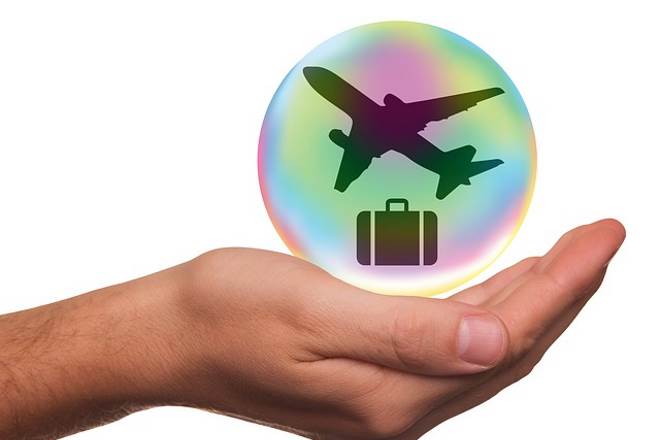Smart Packing Strategies for Multi-Leg Excursions
Multi-leg journeys require packing that adapts to transfers, varying transit rules, and changing conditions. Efficient packing reduces stress during layovers, simplifies commuting between terminals and stations, and helps you respond to timetable changes or unexpected delays with less disruption.

Multi-leg excursions — whether a mix of flights, rail segments, buses or local transit — benefit from packing that prioritizes access, mobility, and contingency. Plan for transfer types, luggage restrictions, and likely weather changes along your route. Keep essential documents, a change of clothes, and a small hygiene kit in carry-on luggage to handle delays or missed connections without needing immediate access to checked bags. This opening overview sets the stage for practical steps that follow, from coordinating itineraries to choosing sustainable gear that makes each transfer smoother.
How can itineraries and timetables guide packing?
Align packing choices with your planned itinerary and the timetables you’ll follow. Identify long-haul legs that require comfort items (neck pillow, compression socks) and short transfer windows that call for quick-access essentials (passport, boarding pass, phone). Save digital and offline copies of timetables and critical confirmations in a single folder on your phone and keep a printed summary in a travel document sleeve. If an itinerary contains overnight trains or sleeper buses, prioritize lightweight, warm layers and a compact sleep kit; for tightly scheduled air-rail connections, make room for items that speed up transitions: easy-to-remove shoes, minimal jewelry, and a dedicated pouch for electronics.
How to pack for flights and rail segments?
Packing for flights emphasizes compliance with airline rules: measured carry-on dimensions, liquids under 100 ml in a clear bag, and secure storage for electronics. For rail travel, storage is generally less restrictive but can be crowded, so aim for a daypack that fits under seats or in small overhead racks. Use packing cubes to separate outfits by leg or day and a lightweight waterproof layer that compacts easily. Shoes should be comfortable for walking between platforms or gates and simple to slip on for security checks. Keep an easily reachable toiletry kit for long legs, and a small laundry kit so you can refresh garments on multi-day routes.
How to manage layovers and transfers efficiently?
Treat each layover as a mini-leg with its own needs. For airport layovers, factor in security rechecks, transit zones, and potential gate changes; place small electronics and travel documents in an outward pocket for swift screening. For station transfers, plan for potentially longer walks and local transit fares; choose luggage with reliable wheels or a comfortable carry strap. Build buffer time into your schedule to accommodate customs, ticketing queues, and platform changes. Prepare a transfer kit that includes a portable charger, compact snacks, a water bottle (empty before airport security), and spare socks or an extra T-shirt to stay comfortable during extended waits.
How to handle visas and travel insurance documentation?
Visas and insurance policies are part of your essential packing. Carry printed copies of visas, entry stamps, vaccination certificates, and a summary of your travel insurance policy, including emergency numbers. Store encrypted digital backups in secure cloud storage and use a separate physical copy from your passport to reduce risk if one set is lost. When booking multi-carrier itineraries, confirm whether your insurance covers missed connections across different operators and verify transit visa requirements for stopover countries. Keep documentation organized in a single travel wallet or a clear document sleeve for quick presentation to immigration or transit officials.
How to optimize mobility, transit, and commuting with luggage?
Prioritize mobility: lightweight but durable luggage, four-wheel spinners for smooth airport movement, and a compact daypack for station or city commuting. Evaluate local transit logistics at hubs where you’ll switch modes—narrow cobblestone streets, long underground corridors, or shuttle buses between terminals can all affect what luggage is practical. Choose luggage with repairable components and avoid overpacking; lighter load improves maneuverability on stairs, crowded platforms, and short taxi rides. Consider versatile clothing that layers for climate variations and collapsible items that free up space for souvenirs or local purchases.
How to balance sustainability, fares and logistics with packing choices?
Sustainable packing reduces waste and can lower costs: bring refillable toiletries, choose multi-use garments, and repair rather than replace travel gear. Plan fares and logistics together: consolidated multi-leg tickets can reduce the risk of separate rebooking and sometimes lower overall cost compared with individually booked segments. Budget for checked-bag fees, local transit fares for transfers between terminals, and travel insurance coverage tailored to multi-leg risks. Below is a comparative snapshot of common services and estimated costs to illustrate typical price ranges.
| Product/Service | Provider | Cost Estimation |
|---|---|---|
| Single-trip travel insurance (standard) | Allianz Global Assistance | Typically $20–$80 per person per week (or ~4–8% of trip cost) |
| Adventure/extended coverage insurance | World Nomads | Typically $40–$150 per person depending on age and coverage |
| Fare search and price alerts | Skyscanner (fare aggregator) | Free to use; fares vary widely by route and season |
Prices, rates, or cost estimates mentioned in this article are based on the latest available information but may change over time. Independent research is advised before making financial decisions.
Conclusion paragraph: Smart packing for multi-leg excursions combines planning, modular gear, and documentation strategies to reduce friction across flights, rail segments, and local transit. Focus on accessible essentials for tight transfers, pack light to improve mobility, and verify visas and insurance to mitigate risks. Thoughtful choices—especially around sustainable items and consolidated fares—can make multi-leg travel less stressful and more resilient to disruptions.





